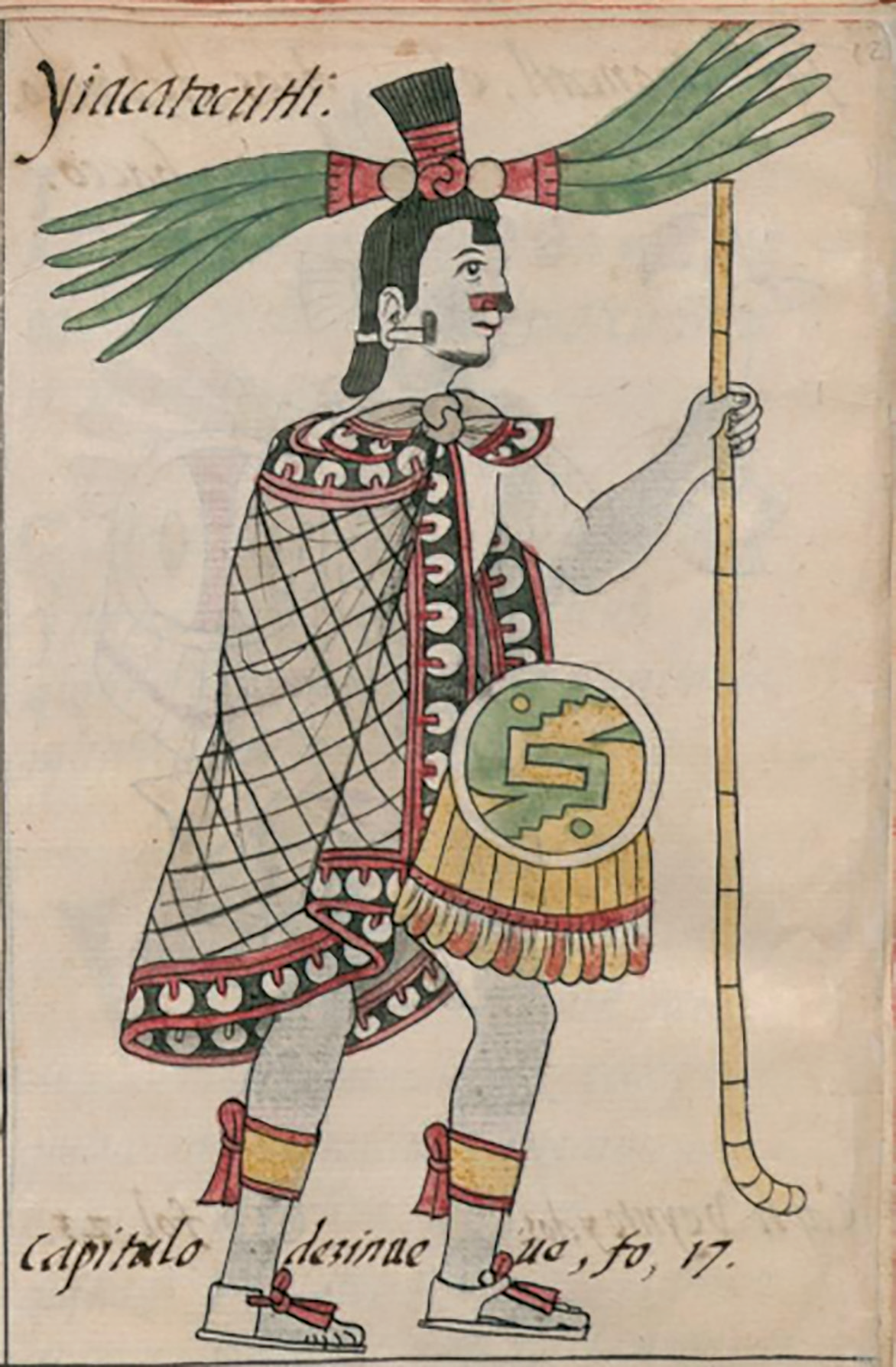In his General History of the Things of New Spain, Fray Bernardino de Sahagún describes a feathered shield with a fret design at the centre, an attribute, apparently, of Yacatecuhtli, god of traders. Sources from the 16th century show Aztecs with plain warrior shields for combat, gala shields for feasts or dances, and other shields exhibiting the insignia of the supreme war chief. The Codex Mendoza suggests the xicalcoliuhqui fret ornament shield was for warriors who had captured more than five prisoners and distinguished themselves in battle.
Yacatecuhtli
Linda Baez
Further reading
- Bujok, E. (2004) Neue Welten in europäischen Sammlungen: Africana und Americana in Kunstkammern bis 1670 (Berlin: Reimer).
- Fane, D., A. Russo, and G. Wolf (eds.) (2015) Images Take flight: Feather Art in Mexico and Europe 1400–1700 (Munich: Hirmer).
- Feest, C. (1990) ‘Vienna’s Mexican treasures: Aztec, Mixtec and Tarascan works from 16th-century American collections’, Archiv für Völkerkunde, vol. 45, 1–64.
- Frischlin, M.J. (1602) Beschreibung deß Fürstlichen Apparatus, Königlichen Auffzugs/Heroischen Ingressus und herrlicher Pomp und Solennitet (Frankfurt am Main).
- Landesmuseum Wurttemberg (2017) Die Kunstkammer der Herzöge von Württemberg: Bestand, Geschichte, Kontext, 3 vols. (Ostfildern: Jan Thorbecke Verlag).
- Mulryne, J.R., H. Watanabe-O’Kelly, and M. Shewring (eds.) (2004) Europa Triumphans: Court and Civic Festivals in Early Modern Europe (Aldershot, Hampshire: Ashgate).
- Nutall, Z. (1892) On Ancient Mexican Shields: an Essay (Leiden: P.W.M. Trap).
- de Sahagún, B. (1961) Florentine Codex: General History of the Things of New Spain [1577] (Santa Fe, NM: School of American Research and the University of Utah).





